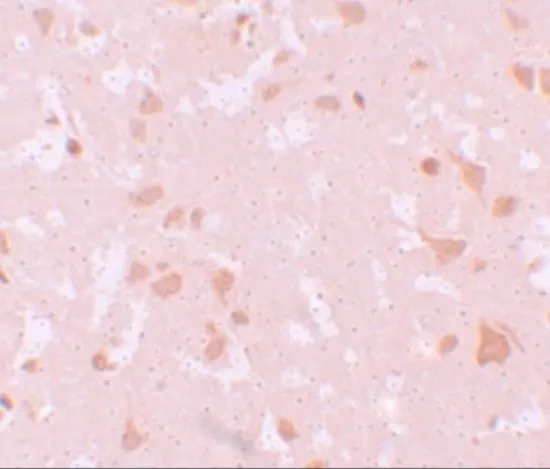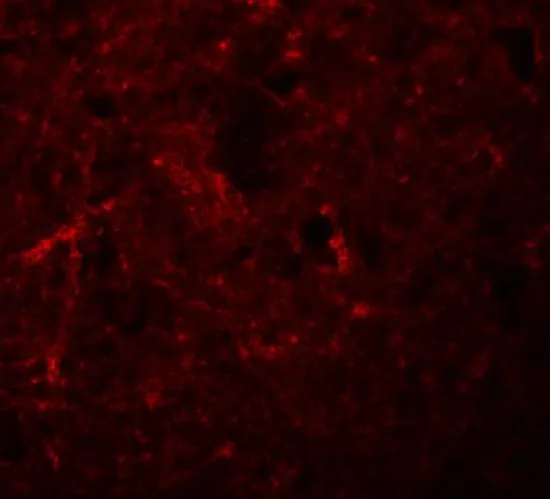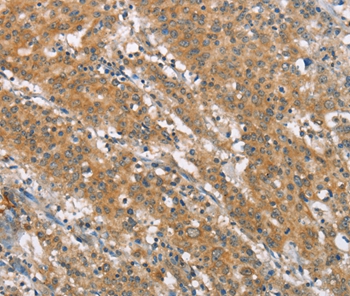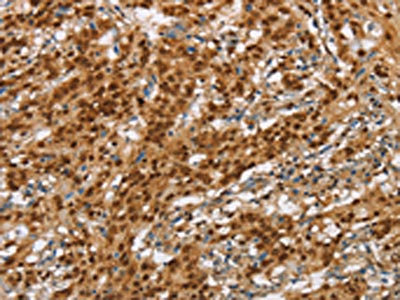
IHC-P analysis of human brain tissue using GTX85156 NLRP7 antibody. Working concentration : 10 microg/ml
NLRP7 antibody
GTX85156
ApplicationsWestern Blot, ELISA, ImmunoHistoChemistry, ImmunoHistoChemistry Paraffin
Product group Antibodies
TargetNLRP7
Overview
- SupplierGeneTex
- Product NameNLRP7 antibody
- Delivery Days Customer9
- Application Supplier NoteWB: 1 microg/mL. IHC-P: 10 microg/mL. *Optimal dilutions/concentrations should be determined by the researcher.Not tested in other applications.
- ApplicationsWestern Blot, ELISA, ImmunoHistoChemistry, ImmunoHistoChemistry Paraffin
- CertificationResearch Use Only
- ClonalityPolyclonal
- Concentration1 mg/ml
- ConjugateUnconjugated
- Gene ID199713
- Target nameNLRP7
- Target descriptionNLR family pyrin domain containing 7
- Target synonymsCLR19.4, HYDM, NALP7, NOD12, PAN7, PYPAF3, NACHT, LRR and PYD domains-containing protein 7, NACHT, LRR and PYD containing protein 7, NACHT, leucine rich repeat and PYD containing 7, PYRIN-containing Apaf1-like protein 3, nucleotide-binding oligomerization domain protein 12, nucleotide-binding oligomerization domain, leucine rich repeat and pyrin domain containing 7
- HostRabbit
- IsotypeIgG
- Protein IDQ8WX94
- Protein NameNACHT, LRR and PYD domains-containing protein 7
- Scientific DescriptionNOD proteins include the apoptosis regulator APAF1 (apoptotic protease activating factor 1) and mammalian NOD-LRR proteins. NALP7, also known as PYPAF3, a member of the related PYRIN-containing APAF1-like proteins (PYPAFs/NALPs) is thought to play a crucial role in cell proliferation. NALP7 has a C-terminal leucine-rich repeat (LRR) region, an N-terminal Pyrin domain (PYD) followed by a NACHT domain, and a NACHT-associated domain. It is expressed in numerous tissues including uterus and ovary, with low levels in heart and brain. NALP7 inhibits caspase-1-dependent interleukin-1beta secretion and is a feedback regulator of interleukin-1beta secretion. Defects in the NALP7 gene are known to cause the formation of a hydatidiform mole (HYDM) and reduce the growth of carcinoma cell lines.
- Storage Instruction-20°C or -80°C,2°C to 8°C
- UNSPSC12352203









